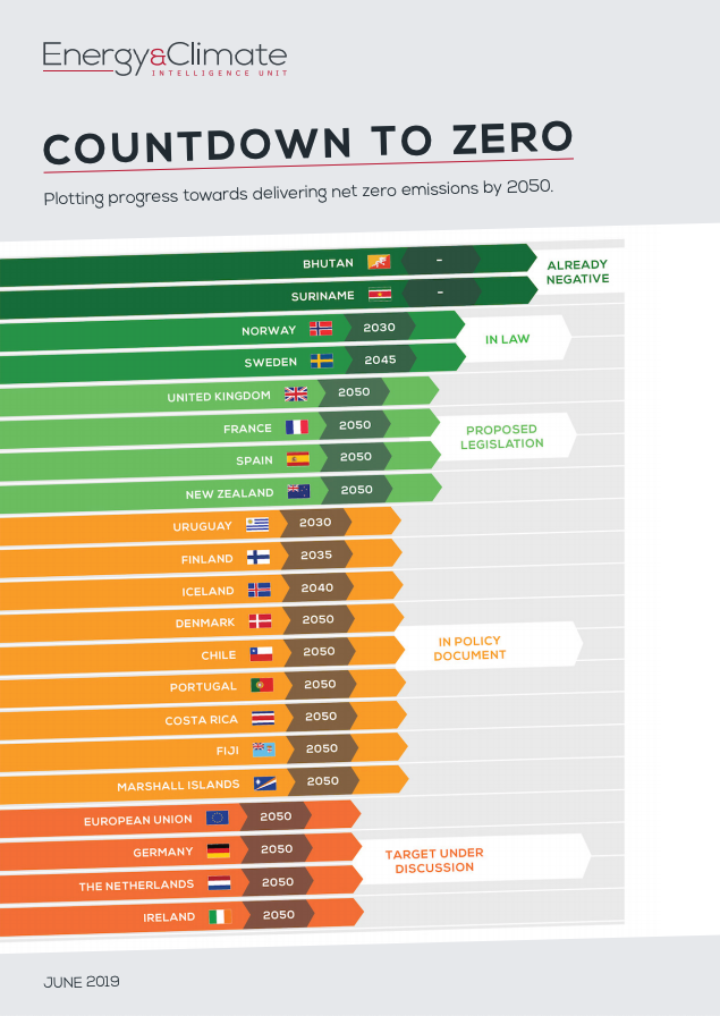Countdown to zero
Plotting progress towards delivering net zero emissions by 2050.
Last updated:
In October 2018, the Intergovernmental Panel on Climate Change (IPCC) issued a simple and direct message to governments: if you want to keep climate change within the limits that you have decided are acceptable, you need to bring global emissions to zero within three decades.
The IPCC Special Report on the 1.5 degrees Celsius global warming target took the concept of net zero out from the specialised environment of science and climate change policy into plain sight on the public and political stage. Now, all governments are aware that if they are to meet the pledge they signed up to in the Paris Agreement and attempt to keep global warming to 1.5oC, they collectively need to do so by 2050.
Even before 2018, a small number of governments, regional authorities and businesses had net zero targets in place. In 2017, Sweden put its target in national legislation. Many companies had set carbon neutrality targets several years before that – and a handful including Google and Microsoft had already met them.
But now, ‘net zero’ is on the international agenda as an explicit indicator of whether a nation, region, city or business is committed to delivering the Paris Agreement. This report analyses progress towards net zero globally, including by nations, regions and cities.
To download the report, click here.

